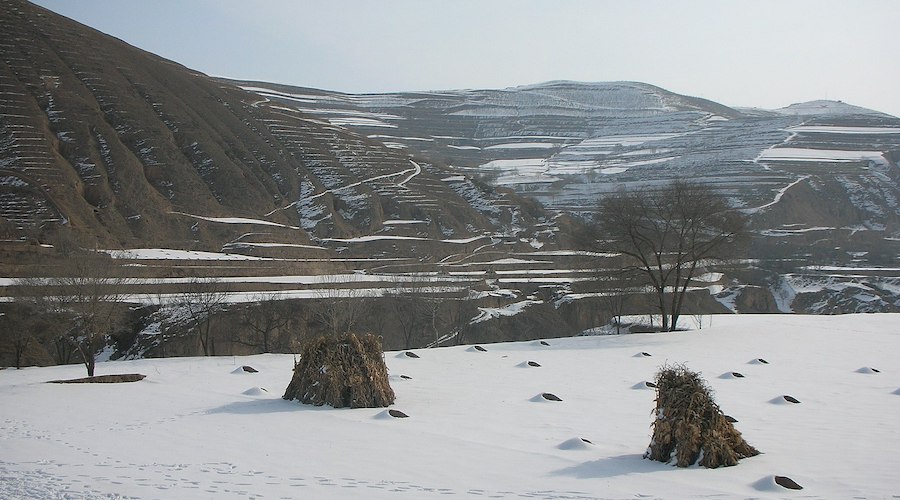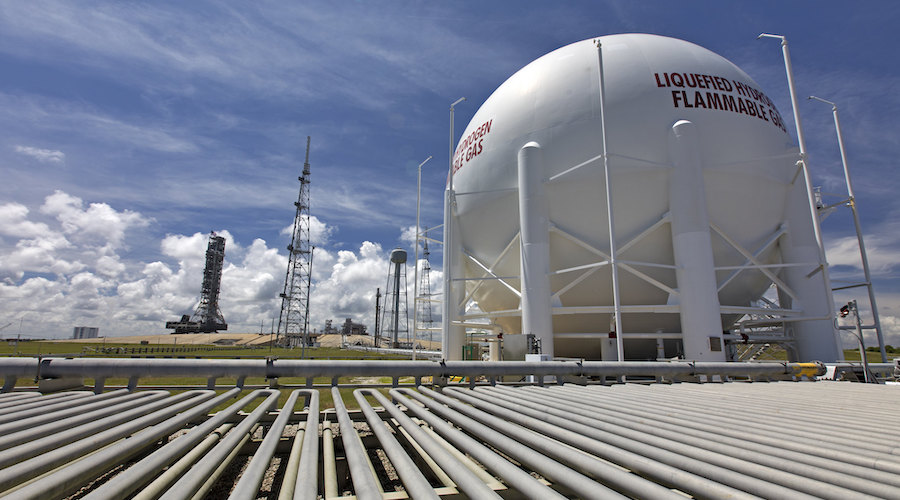When Is Geothermal As Bad As Coal?

Coal generation plants are horrific. The average coal plant kills about 78 people a year just from its toxic and particulate emissions, never mind the global warming problem. Yes, there was a moral case for fossil fuels, and there is a diminishing case for them with each passing year, but it’s hard to justify coal generation anymore in the developed world. The current European energy crisis is one of the few reasons for the developed world to increase its coal generation.
So how can geothermal even be considered in the same ballpark? It’s just underground heat that is used to make steam to spin turbines to generate electricity. How can that possibly be as bad as coal?
Let’s take a stop in the US before we head to the country where coal and a geothermal site can be put on a similar plane by one major factor. Let’s narrow it down to Wyoming. Heck, let’s narrow it down to about 30 miles east of Kemmerer, population around 2,600, in southwest Wyoming. What’s in that spot outside of this tiny town you’ve never heard of? Why, the Shute Creek facility upon which ExxonMobil rests its claim to be the best carbon capture and sequestration organization in the world.
What happens there? Well, ExxonMobil pumps a bunch of naturally occurring and already sequestered carbon dioxide out from underground in the area, about 7 million tons a year, and pushes it back underground in tapped out oil wells in the region to liquify the sludge and pressurize it somewhat so that it can pump more oil out from underground. Sharp minds will have noticed that there’s no carbon capture going on here, there’s CO2 extraction from where it was underground already, just sitting there, not bothering anyone until ExxonMobil decided to exploit it.
Sharper minds will have noticed that enhanced oil recovery is a pretty serious climate problem too. Every ton of CO2 pumped underground results in a quarter of a ton to a ton of oil recovered. And that turns into 1-3 tons of CO2. Yes, this is not a net positive.
Shell game graphic courtesy US National Park Service
” data-image-caption=”
Shell game graphic courtesy US National Park Service
” data-medium-file=”https://cleantechnica.com/files/2022/09/Shell-Game-400×310.jpeg” data-large-file=”https://cleantechnica.com/files/2022/09/Shell-Game-800×621.jpeg” loading=”lazy” class=”size-full wp-image-276761″ src=”https://cleantechnica.com/files/2022/09/Shell-Game.jpeg” alt=”Shell game” width=”812″ height=”630″ srcset=”https://cleantechnica.com/files/2022/09/Shell-Game.jpeg 812w, https://cleantechnica.com/files/2022/09/Shell-Game-400×310.jpeg 400w, https://cleantechnica.com/files/2022/09/Shell-Game-800×621.jpeg 800w, https://cleantechnica.com/files/2022/09/Shell-Game-768×596.jpeg 768w” sizes=”(max-width: 812px) 100vw, 812px”>
Shell game graphic courtesy US National Park Service
Yes, ExxonMobil’s claims to carbon sequestration virtue are a shell game played upon the people of the world, governments, and policy makers, as almost every CCS scheme in the world is.
Let’s hop over to the North Sea on our little quest for geothermal enlightenment about the potential equivalence with coal. Where in the North Sea? Why, to Equinor’s Sleipner facility. For those not up on their Norse mythology, Sleipner was Odin’s eight-legged horse, which sounds like a lot of opportunities to stumble and fall, or perhaps merely a nightmarish spider horse chimera that causes nightmares to all who see it. Equinor also makes hay on its carbon sequestration claims, which it uses to feed its multi-legged and perhaps even nightmarish Sleipner facility. What happens there? Well, Equinor pumps natural gas out from underground and it has too much carbon dioxide mixed in with it, roughly 8%. That won’t burn well in European combined cycle plants and gas furnaces, so they strip most of it out and pump it back underground. For this, they have received something like $1.2 billion in carbon sequestration tax breaks by my rough calculations. Oh, and when the natural gas is burned, 25x the CO2 that they ‘sequester’ is emitted, and that’s ignoring the methane leakages that are an equivalent scale of problem. Over a billion in tax breaks for something that used as directed emits 50x the CO2e.
Yes, that’s another lucrative shell game for a company pulling peacefully sequestered CO2 out from underground and reaping fiscal benefits for pretending to virtuously sequester it.
What does this have to do with geothermal? Well, let’s head south, far south. Find Australia, and then head east. Get to New Zealand. Awesome place. Great wine. Good cheese. Flight of the Conchords. Taika Waititi. Lord of the Rings sets scattering the countryside. Really close to the international date line. Amazing PM in Jacinda Ardern right now. Several billionaires’ apocalypse shelters. That New Zealand.
And also home to the Ngatamariki Geothermal Power Plant, which is a bit north of the middle of the north island, and south of Rotorua.
Now that we’ve found our locale, let’s instead wander around time a bit, casting our minds back to the mid-1980s. Duran Duran. New Wave. Big hair of various terrible sorts. Shoulder pads.
And a bunch of drilling of deep holes with unimaginative names — NM1, NM2, NM3, and NM4 — by the New Zealand government as it explored the potential for geothermal energy at the Ngatamariki site. New Zealand is a Pacific Rim country, and so it’s on the Rim of Fire. It’s a tectonically active set of islands. That means lots of high-quality heat not that far underground. Twelve or thirteen years later the also excitingly named holes NM5, NM6, and NM7 were drilled. The various holes were 1.5 to 3.4 kilometers (1-2.1 miles) deep. Those are serious depths, and when you drill that deep you punch through all sorts of interesting things. For example, they were the first drillers to run into a quartz diorite pluton according to one source, a mass of hard, solidified magma.
Not saying what they punched through that’s relevant to this article, but the aforementioned sharper minds will be on board already. Foreshadowing, it’s a valid literary technique.
And on to 2010. Approval to build geothermal generation at the site was granted. In 2011, construction started. In 2013, only a month later than planned, and apparently under its $470 million budget, it started generating electricity. (One assumes all the pre-existing kilometers-deep holes helped keep costs and schedule under control.) It’s a decent-sized plant, 82 MW. And it generates about 700 GWh a year, which indicates that its capacity factor is in the high 90s. Excellent, environmentally friendly, 24/7 power. Kiwis know how to build geothermal because they’ve done it so often, with 15 sites operating on the archipelago nation, with about a GW of high-capacity factor generation in place.
But wait. Fast forward to August 2022. The firms running the geothermal plant have been running some tests and announced that they are committed to more tests of capturing some of the minimal and entirely inconsequential CO2 emissions from the geothermal plant. What’s the quote? “While emissions from geothermal make up a relatively small component of Aotearoa New Zealand’s emissions profile, this is a very important development for the energy sector’s decarbonisation.”
What are New Zealand’s CO2 emissions per year? About 82.3 million tons apparently. Well, hurrah! It’s a relatively minor portion of the entire country’s emissions. Hmmm. One plant. Relatively minor. Seems like the denominator might be being obscured or obfuscated.
How much buried CO2 escapes annually from the facility? 568,000 tons. How much electricity is generated annually? 700,000 MWh. How many tons per MWh is that? 0.81 tons. And what percentage of New Zealand’s total CO2 emissions is that? Approaching 1%.
That’s not very carbon neutral. in fact, when you add in upstream methane leaks from natural gas extraction, that’s as much CO2e as modern gas generation plants emit. And it’s as much as the best coal generation plants emit per MWh. Of course, the initial holes were dug in the mid-1980s, so one does have to wonder how long they’ve been emitting over 500 thousand tons of CO2 per year.
Oops. Yeah, this geothermal site is as bad as coal or gas plants when it comes to global warming greenhouse gas emissions. It’s a big enough emitter by itself to not be a rounding error in New Zealand. It seems the exploratory drilling results analysis didn’t care about CO2 emissions. And the approval process didn’t care about CO2 emissions (which seems somewhat odd in 2010 in New Zealand).
It’s not like CO2 per MWh wasn’t a consideration for geothermal that was understood at the time. OSTI published a study in 1999 which indicated that the global average for geothermal sites was 0.08 tons of CO2 per MWh, which is a tenth of the Ngatamariki site’s emissions. That’s still higher than wind or solar, but a lot better than gas or coal, so likely sites at or under that average are okay from a climate perspective. But of course half of all geothermal sites in 1999 were over that level.
And now, in 2022, they have realized that this geothermal site is a substantial climate problem, not a climate solution. And hence they have decided to try to bandage it over with carbon capture and sequestration. That never works, but it’s always illustrative to explore why in specific cases.
In this case, they are going to have to suck a bunch of that 24/7 electricity out to run any carbon capture, compression, and sequestration processes. That would cost money, in capital expenses, operating expenses, and lost revenue from the 10% to 15% of auxiliary power required to run the process. And CCS schemes like this on power plants around the world typically get about 85% of CO2 when they are operating properly, but usually don’t operate properly. Boundary Dam in Saskatchewan, Canada, ran at 40% for months and no one noticed.
And where would they put the CO2? They would re-inject it back into the same underground reservoirs they’ve drilled through that the CO2 is spewing from.
This, of course, reminds me of Miami Beach. Yes, more wandering around the globe. It’s in southern Florida, which is all porous limestone under the manicured, overly watered, completely inappropriate lawns and golf courses for the location. Their primary response to sea level rise, which is causing clear sky flooding with sea water bubbling up from underground and storm surges that inundate most of the place, is to spend US$300 million on pumps to suck water off of the land that’s flooded and pumped it back into the surrounding sea.
If you are thinking that this is like using buckets to get water out of the Titanic, you have the right analogy in mind.
And this is what the firms operating the geothermal plant are proposing. About 0.6 million tons of CO2 are escaping through the holes they’ve drilled to create energy, so they are going to try to capture some of it at great expense and pump it back into the same place it’s escaping from.
New Zealand is a great place. It’s a leading light in terms of planned retreat in the face of climate change risks, as I learned when I wrote the Canadian book on how municipalities should prepare to abandon portions of their land area that just won’t be tenable in the future.
But it made a bad mistake permitting this geothermal site. It’s not actually as bad a coal generation. No mercury. No sulphur. No particulates. No attributable deaths per year. But all the CO2 per MWh of coal.
And it does beg the question: how many of the other New Zealand geothermal sites have major CO2 emissions?
Geothermal is great. Except when it isn’t. This site isn’t. New Zealand should put any money it’s considering awarding to the owners for ‘carbon capture and sequestration’ toward wind, solar, and storage instead, and then shut Ngatamariki down as soon as possible.
Appreciate CleanTechnica’s originality and cleantech news coverage? Consider becoming a CleanTechnica Member, Supporter, Technician, or Ambassador — or a patron on Patreon.
Don’t want to miss a cleantech story? Sign up for daily news updates from CleanTechnica on email. Or follow us on Google News!
Have a tip for CleanTechnica, want to advertise, or want to suggest a guest for our CleanTech Talk podcast? Contact us here.
Advertisement
This post has been syndicated from a third-party source. View the original article here.




